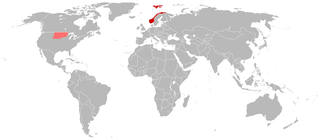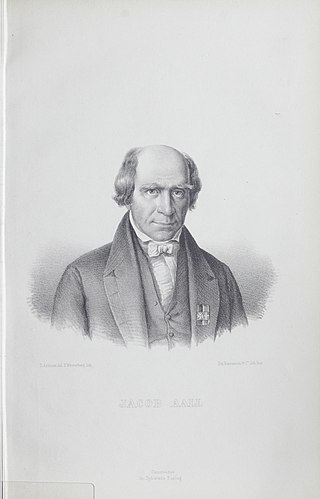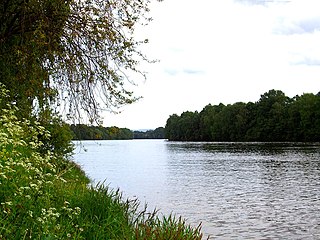
A blast furnace is a type of metallurgical furnace used for smelting to produce industrial metals, generally pig iron, but also others such as lead or copper. Blast refers to the combustion air being "forced" or supplied above atmospheric pressure.

The cementation process is an obsolete technology for making steel by carburization of iron. Unlike modern steelmaking, it increased the amount of carbon in the iron. It was apparently developed before the 17th century. Derwentcote Steel Furnace, built in 1720, is the earliest surviving example of a cementation furnace. Another example in the UK is the cementation furnace in Doncaster Street, Sheffield.

A bloomery is a type of furnace once used widely for smelting iron from its oxides. The bloomery was the earliest form of smelter capable of smelting iron. A bloomery's product is a porous mass of iron and slag called a bloom. This mix of slag and iron in the bloom is termed sponge iron, which is usually consolidated and further forged into wrought iron. The bloomery has now largely been superseded by the blast furnace, which produces pig iron.

An ironworks or iron works is a building or site where iron is smelted and where heavy iron and steel products are made. The term is both singular and plural, i.e. the singular of ironworks is ironworks.
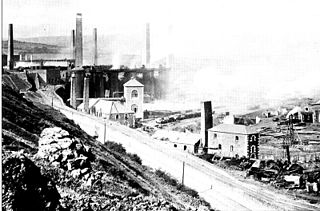
The Cyfarthfa Ironworks was a major 18th- and 19th-century ironworks in Cyfarthfa, on the north-western edge of Merthyr Tydfil, in South West Wales.
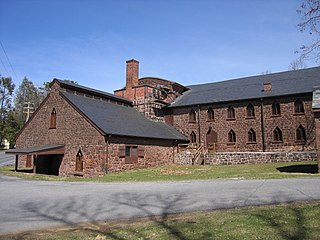
Cornwall Iron Furnace is a designated National Historic Landmark that is administered by the Pennsylvania Historical and Museum Commission in Cornwall, Lebanon County, Pennsylvania in the United States. The furnace was a leading Pennsylvania iron producer from 1742 until it was shut down in 1883. The furnaces, support buildings and surrounding community have been preserved as a historical site and museum, providing a glimpse into Lebanon County's industrial past. The site is the only intact charcoal-burning iron blast furnace in its original plantation in the western hemisphere. Established by Peter Grubb in 1742, Cornwall Furnace was operated during the Revolution by his sons Curtis and Peter Jr. who were major arms providers to George Washington. Robert Coleman acquired Cornwall Furnace after the Revolution and became Pennsylvania's first millionaire. Ownership of the furnace and its surroundings was transferred to the Commonwealth of Pennsylvania in 1932.

Hans Jørgen Christian Aall was a Norwegian jurist and elected official.

Whitecliff Ironworks, sometimes referred to as Whitecliff Furnace, at Coleford, in the Forest of Dean, Gloucestershire, England, are industrial remains associated with the production of iron, using coke, in the Forest of Dean.

Cinderford Ironworks, also known as Cinderford Furnace, was a coke-fired blast furnace, built in 1795, just west of Cinderford, in the Forest of Dean, Gloucestershire, England.

Nesgrenda is a village in Tvedestrand municipality in Aust-Agder county, Norway. The village is located along the Norwegian County Road 415 about 7 kilometres (4.3 mi) west of the town of Tvedestrand and about 1 kilometre (0.62 mi) northwest of the village of Fiane and the European route E18 highway. The Næs jernverk facility is located in the village.
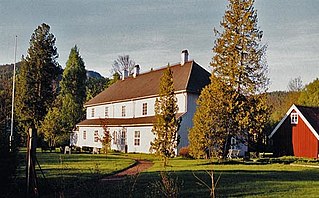
Eidsfos Verk was an ironworks located at Eidsfoss in Vestfold, Norway.
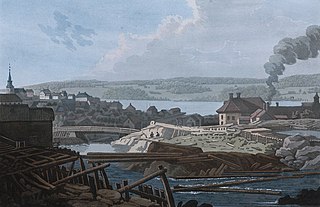
Moss Jernverk was an ironwork in Moss, Norway. Established in 1704, it was for many years the largest workplace in the city, and melted ore, chiefly from Arendalsfeltet. With power from the nearby waterfalls it manufactured many different products. From around the middle of the 1700 century the works were the leading armory in the country and produced hundreds of heavy iron cannons. The first rolling mill in Norway was also located here.

Heinrich Meldahl was a Danish industrial designer, architect and the owner of an iron foundry.
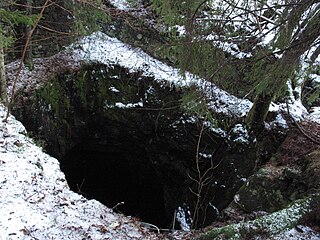
Arendalsfeltet is a geologic province in Norway, between Fevik and Tvedestrand in the county of Aust-Agder, mainly situated within the borders of Arendal. Arendalsfeltet is especially known for its deposits of iron ore.

Niels Aall was a Norwegian estate owner, businessman and politician.

Hassel Iron Works was a former mining and iron works company located near the village of Skotselv in Øvre Eiker, Buskerud, Norway.

The Bonawe Iron Furnace, was an industrial complex located in Bonawe, Lorn District, Scotland. It operated in the middle of the eighteenth century, with the aim of producing pig iron. Central to this complex was a charcoal fired blast furnace.

Tvedestrand is a town and the administrative centre of Tvedestrand municipality in Aust-Agder county, Norway. The town is located at the northern end of the Tvedestrandfjorden at the intersection of the Norwegian County Road 411 and Norwegian County Road 410. The 1.93-square-kilometre (480-acre) town has a population (2017) of 2,503 which gives the town a population density of 1,297 inhabitants per square kilometre (3,360/sq mi). The Tvedestrand Church is located in the central part of the town.

The Lithgow Blast Furnace is a heritage-listed former blast furnace and now park and visitor attraction at Inch Street, Lithgow, City of Lithgow, New South Wales, Australia. It was built from 1906 to 1907 by William Sandford Limited. It is also known as Eskbank Ironworks Blast Furnace site; Industrial Archaeological Site. The property is owned by Lithgow City Council. It was added to the New South Wales State Heritage Register on 2 April 1999.




